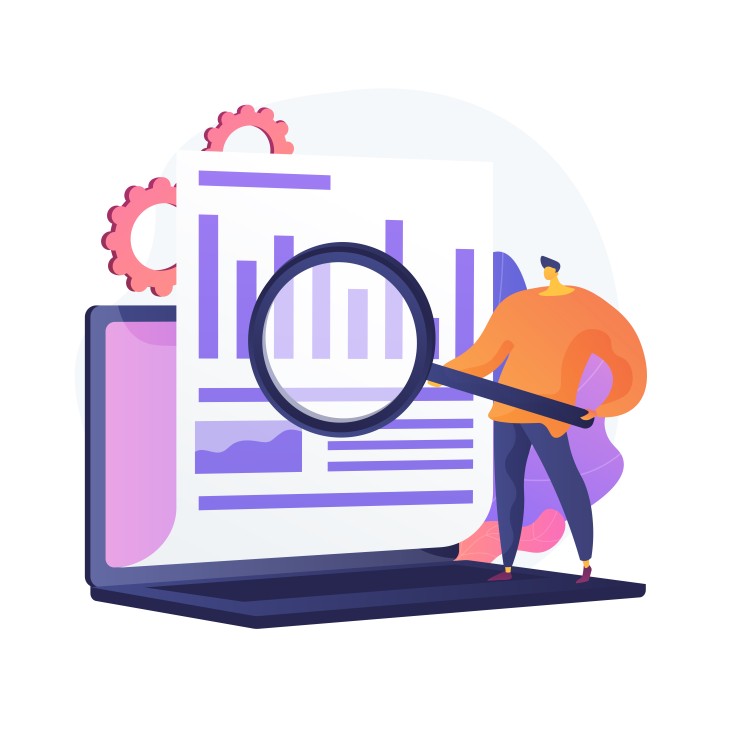


July 9, 2024
Eyes4Research
The construction industry is a dynamic and multifaceted space, and at its core lies the crucial role of general contractors. They are the linchpins of construction projects, overseeing everything from initial planning to the final touches. Understanding their perspectives and experiences is essential for stakeholders across the construction landscape.
However, conducting market research with general contractors presents unique challenges. Here, we will delve into the intricacies of the world of general contractors, and explore the hurdles in conducting research with this vital audience.
What is the Role of General Contractors?
General contractors are pivotal in orchestrating construction projects, whether residential, commercial, or industrial. Their responsibilities include:
Given their multifaceted roles of general contractors, they possess a wealth of knowledge and experience that is invaluable for market research. But leveraging this deep reservoir of insight is easier said than done.
Challenges in Conducting Research with General Contractors
A Solid Research Solution: Custom Online Panels
Custom online panels, such as the ones designed and managed by Eyes4Research, offer a promising solution to the challenges of conducting research with general contractors. By designing a dedicated and tailored panel of general contractors, researchers can engage with this hard-to-nail-down group more effectively. Here’s how:
The construction industry is competitive and is rapidly evolving. Staying ahead of the curve requires deep actionable insights. General contractors hold the keys to this knowledge, but traditional research methods often fall short of capturing their expertise. Custom online panels present an innovative and effective solution to bridge the gap between researchers and the expertise of general contractors.
By utilizing custom online panels, businesses can overcome the challenges of researching general contractors and gain a competitive edge with precise actionable insights tailored to their needs.
Read more about the construction industry on the Eyes4Research blog. Eyes4Research also has everything you need to collect high-quality insights from general contractors. Our panels are comprised of B2B, B2C, and specialty audiences ready to participate in your next research project. Learn more about our specialty panels here.

May 23, 2024
Eyes4Research
The COVID-19 pandemic has reshaped the market research space, challenging traditional methodologies and accelerating the adoption of innovative approaches. Among these, custom online panels have emerged as a cornerstone of market research strategies, offering unprecedented flexibility, accessibility, and depth of insights.
Here, we’ll delve into the evolution of market research methodologies, explore the benefits of custom online panels, and make a case for their widespread adoption in the post-COVID era.
The Pre-COVID Research Methodologies
Traditional market research methodologies relied heavily on in-person interactions, including focus groups, in-depth interviews, and observational studies. While these methods provided valuable insights, they were often constrained by logistical challenges such as participant recruitment, geographical limitations, and time-consuming data collection processes. Moreover, the onset of the pandemic disrupted these methods, necessitating a shift towards remote alternatives.
Custom Online Panels Emerge As an Effective Solution
Custom online panels, such as the ones created and managed by Eyes4Research, have gained prominence as a versatile and efficient method of conducting market research. These panels consist of pre-recruited participants who have opted in to take part in research studies often in exchange for incentives or rewards.
When researchers leverage custom online panels, they gain access to a diverse pool of participants, spanning various demographics, geographic regions, and consumer segments. This ensures that studies are conducted with the right audience in the first place, which enhances the relevance and reliability of the insights generated.
What Are The Benefits of Custom Online Panels?
The benefits of custom online panels extend far beyond access to a broad participant base. These panels offer several advantages, including the following:
In the post-COVID market research landscape, custom online panels offer a strategic advantage for B2B and B2C companies seeking to stay ahead of the curve. Businesses investing in online panels can access timely and actionable insights from diverse audiences, enabling them to make informed decisions, drive innovation, and capitalize on emerging opportunities.
Whether conducting ad-hoc studies, tracking trends in your market, or testing new product concepts, custom online panels provide a flexible and scalable platform for engaging with consumers and unlocking valuable insights without the cost of the types of in-person research methods that were popular before the pandemic.
As the market research space navigates the complexities of the post-COVID era, the importance of agile and adaptable research methods cannot be overstated. Online panels represent a shift in research, offering unparalleled access to diverse participant pools, rapid data collection capabilities, and longitudinal insights into consumer behavior.
By embracing custom online panels and capturing the power of technology, B2C and B2B companies can position themselves for success in a competitive marketplace, driving growth, innovation, and customer satisfaction in an increasingly digital age.
Online panels are powerful tools that provide a more affordable way for companies to gather valuable data to determine the value of their brand’s product or service. Eyes4Research has everything your company needs to collect high-quality insights from consumers. Our panels are comprised of B2B, B2C, and specialty audiences ready to participate in your next research project. Learn more about our online panels here.

May 9, 2024
Eyes4Research
The landscape of healthcare is constantly evolving, with insurance playing a pivotal role in ensuring accessibility and affordability. Within this space, the dental industry is a major component– addressing not only oral health but also overall well-being. But understanding the dynamics between insurance and the dental sector requires keen insights, and here is where market research steps in as a guiding light.
Understanding Market Dynamics
Market research unveils the layered relationship between insurance providers and the dental industry. Researchers can decipher the evolving needs of individuals seeking dental coverage by delving into consumer behavior, preferences, and trends. Insights into demographics, socioeconomic factors, and geographic location enable insurers and dental practitioners to tailor their offerings effectively.
Navigating Regulatory Frameworks
The insurance and dental sectors operate within a complex web of regulators and compliance standards. Market research serves as a compass, one that guides stakeholders through the intricacies of legislative frameworks. By staying on top of regulatory changes and consumer sentiments, companies can adapt their strategies to foster trust and compliance.
Driving Innovation and Adaptation
Innovation lies at the heart of both insurance and dental care. Market research fuels innovation by providing valuable feedback on emerging technologies, treatment preferences, and service delivery models. When insurers are armed with insights from consumers, they can develop tailored dental insurance products that resonate with evolving consumer needs, while dental providers can refine their services to enhance patient satisfaction and outcomes.
The Role of Custom Online Panels
Custom online panels offer a powerful tool for conducting targeted market research within the insurance and dental sectors. By assembling a diverse pool of respondents, ranging from insurance policyholders to dental professionals, these panels facilitate in-depth insights and actionable recommendations.
From assessing brand perception to gauging satisfaction levels, custom online panels, such as the Dental professionals’ panel created and managed by Eyes4Research, provide insurers and dental practitioners with a comprehensive understanding of market dynamics.
In today’s increasingly digital age, harnessing the power of custom online panels is essential for staying ahead in the insurance and dental industries. Our tailored panels enable stakeholders to access real-time data, conduct surveys, and collect feedback with ease. Whether you are a dental insurer seeking to refine your product offerings or a dental practice aiming to enhance patient experiences, our custom online panels empower you to make informed decisions and drive meaningful change.
The relationship between insurance and the dental industry underscores the importance of market research in navigating this complex space. Leveraging insights gained from custom online panels allows stakeholders to unlock new opportunities, drive innovation, and ultimately, improve access to quality dental care for patients around the globe.
Online panels are powerful tools that provide a more affordable way for companies to gather valuable data to determine the value of their brand’s product or service. Eyes4Research has everything your company needs to collect high-quality insights from consumers. Our panels are comprised of B2B, B2C, and specialty audiences, like dental professionals ready to participate in your next research project. Learn more about our online panels here.

April 29, 2024
Eyes4Research
In the market research space, the motivations that drive research panelists and survey participants are as diverse as the individuals themselves. From monetary incentives to underlying satisfaction, understanding these motivations is essential for deciphering the intricacies of participant engagement and ensuring the integrity of research outcomes.
Let’s explore the factors that influence participants’ motivations, along with real-world examples of the impact of those motivations on data quality and research efficacy.
What is the Value of Consumer Opinions?
Consider a scenario where a leading cosmetics company is seeking insights into consumer preferences for skincare products. Through online surveys and focus groups, the company collects feedback from panelists regarding product efficacy, package design, and pricing.
These insights help inform product development strategies and marketing campaigns, allowing the company to cater directly to the evolving needs and desires of its target audience, an opportunity they might have left on the table, had they not sought insights from their customers.
Recognizing the Value of Participant’s Time
Imagine an online retailer conducting a satisfaction survey among recent customers to get a read on their individual shopping experiences over the last year. Sweetening the deal by offering participants exclusive discounts or entry into a prize draw incentivizes participation and allows the brand to show appreciation for their customers’ time and feedback. This approach creates a sense of reciprocity and encourages continued engagement with the brand.
The Role of Incentives
A telecommunications company launches a customer feedback program to chain insights on service quality and customer satisfaction. In addition to offering monetary rewards for completing surveys, they implement a tiered incentive system where participants earn bonus points for providing detailed feedback or participating in follow-up interviews. This incentivizes active participation and enriches the depth of insights gained from the research.
Why Participants’ Understanding Survey Design Is Important
When seasoned participants understand survey design, they can navigate questions more easily, leading to increased data quality. For example– a market research firm studies consumer attitudes towards sustainable fashion. They carefully design survey questions to capture nuanced opinions on topics such as eco-friendly materials, ethical manufacturing practices, and pricing considerations.
By utilizing clear language in their questions, balancing response options, and maintaining a logical flow throughout the survey, the research firm keeps a lid on participant response bias and ensures a higher level of data quality overall.
What Motivates Survey Participants?
While some regular survey participants might do it for a few extra dollars, others place a higher premium on making their opinions known to a brand, expecting that their insights will result in a higher-quality product or service.
For example: a healthcare organization surveys its patients to assess satisfaction with telemedicine services. While monetary incentives may attract some participants, others are motivated by the desire to improve healthcare access or contribute to the advancement of remote healthcare delivery in their community. With the healthcare organization acknowledging and appealing to diverse motivations in its research, it establishes a sense of purpose and collective impact among the participants, regardless of their ultimate motivation.
How Brands Can Cultivate Engagement and Long-Term Relationships with Survey Participants
A software company maintains a dedicated community of beta testers who provide feedback on new product features and user experience enhancements. Through regular communication, exclusive previews, and opportunities to shape product development roadmaps, the company has encouraged community and provided a space for collaboration among the beta testers.
This sustained engagement yields valuable insights and cultivates brand loyalty over the long term, as the participants feel they have played a part in developing new products and features.
In the changing landscape of market research, participants’ motivations are influenced by a complex mix of factors, ranging from financial incentives to individual values and impulses to help brands ‘do better’.
Researchers can encourage meaningful engagement, enhance data quality, and drive data-informed decision-making by understanding and catering to these motivations. Custom online panels, such as the ones created and managed by Eyes4Research, give brands an efficient, cost-effective method of collecting data from a tailored and vetted audience.
By following the real-world examples given above and implementing strategic approaches like custom online panels, the path to unlocking the full potential of consumer insights becomes clear, paving the way for brands to more exciting innovation and growth in an increasingly competitive marketplace.
Online panels are powerful tools that provide a more affordable way for companies to gather valuable data to determine the value of their brand’s product or service. Eyes4Research has everything your company needs to collect high-quality insights from consumers. Our panels are comprised of B2B, B2C, and specialty audiences ready to participate in your next research project. Learn more about our online panels here.

April 22, 2024
Eyes4Research
Dispelling misconceptions about the role of veterinarians is essential to recognizing their invaluable contributions to animal welfare. Despite common misunderstandings, veterinarians are indeed doctors, tasked with the challenging responsibility of caring for a diverse range of patients, from household pets to exotic species. Their dedication to improving the health and well-being of animals makes them indispensable to the medical community.
Aspiring vets undergo rigorous training, culminating in a Doctor of Veterinary Medicine (DVM) degree. This comprehensive education equips them with the knowledge and skills to diagnose, treat, and prevent illnesses across species, ensuring optimal care for their animal patients.
Understanding the Impact of Veterinarians
Despite their relatively small numbers compared to human healthcare professionals, veterinarians wield significant influence within the pet industry and beyond. Their expertise extends beyond clinical practice to encompass research, education, and advocacy efforts aimed at promoting animal welfare. As trusted authorities on all matters related to animal health, veterinarian play a pivotal role in shaping consumer behavior and driving innovation in pet products and services.
The Multifaceted Responsbilities of Vets
Contrary to popular belief, the responsibilities of veterinarians extend far beyond the confines of their clinics. In addition to provding medical care to their patients, veterinarians serve as educators, researchers, and advocates for animal welfare. Their broad skill set enables them to perform a wide range of tasks, from performing surgeries to prescribing medications, all with the utmost dedication to their patients’ well-being.
The Ripple Effect: Vets’ Influence on the Pet Industry
The influence of veterinarians extends beyond the walls of their clinics, permeating every aspect of the pet industry. Their recommendations carry significant weight among pet owners, influencing purchasing decisions and brand loyalty. By leveraging their expertise and insights, brands can gain a competitive edge in the market and position themselves as leaders in animal health and wellness.
Navigating the Challenges: Overcoming Hurdles in Vet Research
Engaging with veterinarians for research purposes presents unique challenges, including scheduling constraints and competing priorities. However, the insights gleaned from these collbaborations are invaluable fro brands seeking to develop products and services that meet the needs of both pets and their owners.
By establishing a dedicated platform for veterinarian experts, brands can streamline the research process and gain access to the expertise needed to drive innovation and success in the pet industry. When brands respect the expertise of veterinarians and value their input, they can create meaningful partnerships with vets that yield tangible benefits for pets and their owners.
Eyes4Research recognizes the vital role that veterinarians play in the pet industry. Our veterinarian panel allows vets to share their insights, and collaborate with brands on their research initiatives. Joining forces with vets allows brands to gain a deeper understanding of consumer preferenecs, market trends, and emerging opportunities in the pet industry.
Leveraging the voice of veterinary experts is essential for brands seeking to success in the pet industry. Their insights and expertise help brands develops products and services that meet the needs of pets and their owners, driving innovation and growth in this dynamic market.
Partner with Eyes4Research for everything you need to collect high-quality insights from veterinarians. Our panels are made up of B2B, B2C, and specialty audiences ready to participate in your next research project. Learn more about our specialty panels here so that you can make your product the product of choice for veterinarians.

April 8, 2024
Eyes4Research
In the digital age, data is hailed as the new currency. B2C and B2B brands rely on consumer data to drive marketing strategies, personalize experiences, and make informed business decisions. However, concern is growing over the quality of this data, as industry experts have acknowledged a decline.
Imagine this: a frazzled and weary consumer, navigating the digital landscape daily, bombarded with surveys, pop-ups, and requests for feedback. In the pursuit of understanding consumer behavior, seeking data has become a battle, where ironically, the casualties are often the very insights brands are looking for.
Let’s dig deeper into the reasons behind this data quality decline:
As consumers engage with surveys and questionnaires, they do so in a sea of distractions, their focus diluted by constant distractions. Participant distraction and multitasking emerge as detractions, diminishing the quality of the data collected.
In light of these challenges, brands should consider vendors that provide well-managed custom online panels as an option for consumer research. Online panels, such as the ones created and managed by Eyes4Research, are comprised of carefully recruited and engaged participants.
The Benefits of Online Panels for B2C and B2B Brands
Targeted Recruitment: B2C and B2B brands can recruit panelists based on specific demographics, interests, and behaviors, ensuring the data collected is relevant and representative of their target audience.
Ongoing Engagement: By maintaining a community of engaged panelists, brands can gather insights over time, track changes in consumer preferences and behaviors, and build trust and rapport with participants.
Data Validation: The custom online panels created by Eyes4Research enable brands to validate data through surveys, feedback mechanisms, and other studies. This validation process helps identify and rectify inaccuracies, ensuring the integrity and reliability of the data.
Compliance Assurance: By implementing strong consent management and compliance measures, custom online panels ensure that data collection practices adhere to regulatory requirements, limiting the risk of non-compliance and potential fines.
Agile Insights: With access to an engaged panel of respondents, brands can quickly collect feedback and activate marketing campaigns and product offerings in real-time, enhancing agility and responsiveness.
The decline in consumer data quality poses challenges for brands seeking to leverage data-driven insights to drive growth and innovation, However, by embracing custom online panes as a strategic approach to data collection and engagement, brands can overcome these challenges and uncover the full potential of consumer data to fuel their success in the current business landscape.
Online panels are powerful tools that provide a more affordable way for brands to collect valuable data to optimize their marketing strategies. Eyes4Research has everything your company needs to collect high-quality insights from consumers. Our panels are comprised of B2B, B2C, and specialty audiences ready to participate in your next research project. Learn more about our online panels here.

March 29, 2024
Eyes4Research
In the market research space, reaching B2B audiences poses unique challenges. Unlike B2C audiences, B2B decision-makers are often harder to reach due to their busy schedules and specific expertise.
However, with the right recruiting methods and innovative approaches, attracting B2B audiences for research is possible. Here are some effective recruiting strategies tailored to unlock B2B audiences for research purposes, and how custom online panels can make all the difference in your B2B research initiatives.
Understanding the Challenges
Before diving into the recruitment strategies, it is crucial to understand the challenges inherent in targeting B2B audiences for market research:
So what are some effective methods when recruiting audiences for your research initiatives? Here are a few:
Strategic Partnerships: Collaborating with industry associations trade organizations, or professional networks can facilitate access to B2B audiences. These partnerships provide credibility and help establish rapport with potential respondents.
Targeted Outreach: Utilize targeted email campaigns, LinkedIn messages, and social media advertising to reach B2B professionals directly. Personalized communication highlighting the value proposition of participation is key to capturing their interest.
Incentives and Rewards: Offer attractive incentives such as cash rewards, gift cards, or discounts on relevant products and services to incentivize participation. B2B respondents are more likely to engage when they perceive tangible benefits from their involvement.
Thought Leadership Content: Create compelling thought leadership content, such as whitepapers, webinars, or industry reports, to attract B2B audiences. Positioning the research as an opportunity to contribute to industry knowledge can enhance participation rates.
The Power of Custom Online Panels
Custom online panels are valuable for recruiting and engaging B2B audiences in market research. Online panels, such as the ones created and managed by Eyes4Research, offer several important advantages.
Custom panels enable recruiters to target specific B2B demographics based on industry, job title, company size, and other relevant criteria. This sort of targeted approach ensures the recruitment of highly qualified respondents.
At Eyes4Research, our B2B panel provides our clients with access to decision-makers across industries, such as Banking, Legal Services, Marketing/Advertising, Real Estate, Financial Services, and many more.
By building a dedicated panel of B2B participants, researchers can establish long-term relationships and foster ongoing engagement. Regular communication and exclusive opportunities incentivize panel members to remain active and provide consistent feedback.
Online panels provide a controlled environment for data collection ensuring high-quality responses and adherence to data privacy regulations. Researchers can implement regulations. Researchers can also implement stringent security measures to safeguard sensitive information shared by B2B respondents.
Recruiting B2B audiences for research requires a combination of strategic approaches, targeted outreach, and innovative solutions. Custom online panels emerge as a powerful tool for overcoming the challenges with accessing niche B2B demographics, offering unparalleled flexibility, engagement, and data quality.
By leveraging these recruiting methods and harnessing the capabilities of custom online panels, researchers can gain valuable insights from B2B audiences, driving informed decision-making in an increasingly competitive business landscape.
Read more about market research and the business landscape on the Eyes4Research blog. Eyes4Research also has everything you need to collect high-quality insights from consumers. Our panels are comprised of B2B, B2C, and specialty audiences ready to participate in your next research project. Learn more about our specialty panels here.

March 26, 2024
Eyes4Research
The dental industry, often overlooked in market research, is a multifaceted landscape comprising diverse professionals, specialized services, and evolving trends. Understanding its complexities sheds light on the nuances within the field and unveils opportunities for researchers to thrive and innovate.
Let’s take a closer look at the intricacies of the dental industry and explore how online panels of dental professionals can revolutionize research methodologies.
The Diverse Range of Dental Professionals
The dental industry encompasses a diverse range of professionals, each contributing unique expertise to patient care and oral health. From general dentists to specialized practitioners such as orthodontists, periodontists, and oral surgeons, the field boasts a wide spectrum of skills and specializations.
Each category of dental professional brings distinct perspectives, practices, and challenges, making it essential for researchers to comprehend the dynamics at play within each specialty.
Specialized Services and Treatment Methods
Within the dental industry, the range of services and treatment methods is vast, catering to diverse patient needs and preferences. From routine dental check-ups and cleanings to complex restorative procedures and cosmetic enhancements, dental practices offer a wide array of services aimed at improving oral health and enhancing aesthetics.
In addition, advancements in technology and treatment techniques continually reshape the market, driving innovation and transforming patient care.
What Are the Challenges for Research?
Despite its significance, the dental industry poses unique challenges for researchers. Accessing relevant data, understanding consumer behavior, and gauging market trends require tailored approaches that resonate with dental professionals and stakeholders.
Traditional market research methods may fall short of capturing the nuanced insights and perspectives prevalent within the dental community, highlighting the need for innovative and effective solutions that will bridge the gap between researchers and industry experts.
How Custom Online Panels Can Unlock Dental Industry Insights
Custom online panels of dental professionals as the ones created and managed by Eyes4Research, offer a powerful solution for conducting targeted research within the dental industry. By assembling panels comprising dentists, specialists, hygienists, and other stakeholders, researchers gain direct access to valuable insights, opinions, and trends that shape the industry landscape.
These panels facilitate real-time engagement, allowing researchers to collect feedback and refine strategies with precision and efficacy.
The Value of Customization and Collaboration
Tailoring online panels to specific research objectives and demographics enhances the relevance and accuracy of the insights collected. Collaborating with key thought leaders and influencers further enriches the research process, encouraging dialogue, and exchange of ideas within the dental community.
Embracing customization and collaborations means that researchers can unlock new dimensions of understanding and drive meaningful impact in the dental industry.
The dental industry represents a dynamic ecosystem characterized by diversity, innovation, and complexity. Market researchers navigating this space need to recognize the nuances present in different specialties, services, and stakeholders.
The dental online panel created by Eyes4Research offers a transformative research approach, enabling us the ability to harness the expertise and perspectives of dental professionals effectively.
Online panels are powerful tools that provide a more affordable way for companies to gather valuable data to determine the value of their brand’s product or service. Eyes4Research has everything your company needs to collect high-quality insights from consumers. Our panels are comprised of B2B, B2C, and specialty audiences, like dental professionals ready to participate in your next research project. Learn more about our online panels here.

March 26, 2024
Eyes4Research
In market research, the idea of collaboration is a marker of innovation instead of a constraint. While some researchers might harbor reservations about sharing insights or data with partners, the reality is that research partnerships can spark growth, deepen understanding, and encourage a climate of community within industries.
Here is why research partnerships are not only beneficial but crucial for driving meaningful insights and propelling B2C and B2B businesses forward.
Pooling Expertise for Enhanced Insights
Research partnerships bring together diverse perspectives, expertise, and resources. Collaborating with other organizations, institutions, or experts allows for a broader scope of analysis and interpretation.
By pooling these resources, teams can access specialized knowledge, methodologies, and tools that might not be readily available in-house. This collective expertise often leads to research that is more comprehensively designed, higher-quality data, and more nuanced insights that go beyond the confines of individual capabilities.
Accelerating Innovation and Problem-Solving
Innovation thrives in environments where ideas can intersect and collide. Research partnerships serve as catalysts for innovation by creating environments where creativity flourishes. Collaborative endeavors encourage brainstorming, experimentation, and the exploration of new methodologies.
When organizations join forces, they can tackle complex challenges more effectively, uncover new solutions, and stay ahead of rapidly changing market trends.
Expanding Reach and Diversity
Partnerships enable research efforts to transcend geographic and demographic boundaries. By collaborating with diverse partners, researchers gain access to varied perspectives, cultural insights, and market nuances.
This expanded reach allows for more inclusive and representative research outcomes, ensuring that insights resonate with a broader audience. In addition, partnerships facilitate access to untapped markets, niche demographics, and hard-to-reach populations, enabling organizations to uncover hidden opportunities and address the unmet needs of consumers.
Building Trust and Credibility
In an era marked by data privacy concerns and ethical considerations, research partnerships underscore transparency, accountability, and integrity. Aligning with reputable partners allows organizations to enhance their credibility and build trust among stakeholders.
Collaborative research initiatives demonstrate a commitment to rigorous methodologies, ethical standards, and data privacy principles.
Why Custom Custom Online Panels Are Important
As B2C and B2B businesses navigate the complexities of the digital age, accessing reliable and actionable insights is crucial. Custom online panels offer a dynamic platform for collecting targeted feedback and uncovering actionable intelligence.
At Eyes4Research, we specialize in designing and managing custom online panels that are tailored to our clients’ unique research needs. Here is how custom online panels empower our clients:
With Eyes4Research, our clients harness the power of partnership and unlock the potential of custom online panels to drive informed decision-making encourage innovation, and stay ahead in today’s competitive business landscape.
Online panels are powerful tools that provide a more affordable way for B2C and B2B businesses to collect valuable data to determine the value of their brand’s product or service. Eyes4Research has everything your company needs to collect high-quality insights from consumers. Our panels are comprised of B2B, B2C, and specialty audiences ready to participate in your next research project. Learn more about our online panels here.

March 26, 2024
Eyes4Research
The healthcare space is always changing, and understanding the perspectives and behaviors of physicians is crucial for pharmaceutical companies, medical device manufacturers, and healthcare providers alike. Market research with physicians offers invaluable insights that drive product development, marketing strategies, and patient care improvements.
However, conducting research with physicians presents unique challenges that require innovative solutions. Here, we’ll explore some of these challenges and discuss how custom online panels can be instrumental in overcoming them effectively.
Limited Time Availability
Physicians are notoriously busy professionals, often juggling patient appointments, administrative tasks, and continuing education requirements. Traditional research methods such as in-person interviews or focus groups, can be challenging to schedule and may disrupt physicians’ already packed schedules.
Custom online panels, such as the ones created and managed by Eyes4Research, offer a convenient solution by allowing physicians to participate in research activities at their own pace and on their own time, minimizing disruptions to their busy schedules.
Access to Diverse Physician Specialties
Physicians represent a diverse range of specialties, each with its unique perspectives and insights. Recruiting a representative sample of physicians across various specialties can be difficult using traditional recruitment methods.
Custom online panels enable researchers to access a broader and more diverse pool of physicians, ensuring that insights are reflective of the entire medical landscape. At Eyes4Research, our Physician panel represents a wide range of specialties, including Family Medicine, Immunology, Cardiology, Primary Care, and many more.
Geographic Reach
Physicians are located across a variety of geographic regions, ranging from urban centers to rural communities. Conducting research with physicians scattered across different locations can be logistically challenging and costly.
Depending on where the research is being conducted, there can be differences in data collection, due to factors such as the geopolitical climate, environmental realities, and cultural variations that need to be considered.
For instance, conducting research in the U.S. and Canada requires researchers to connect with local and regional authorities to secure any necessary permits. A short list of some of the possible types of organizations researchers might need to contact includes hamlet or community council offices, indigenous representatives, and any local research institutes.
Both the U.S. and Canada have regions that are home to indigenous peoples and gaining insights from physicians in those regions would be crucial to any research project.
Custom online panels break down geographic barriers, allowing researchers to engage with physicians from across the country or even internationally, without the need for extensive travel or the type of logistical coordination outlined above.
Our Physician panel has a custom sample of over 300,000 healthcare professionals from around the globe who are authentic, well-screened, and ready to participate in our clients’ research projects.
Compliance and Privacy Concerns
Physicians are bound by strict regulations regarding patient privacy and data security. Traditional research methods may raise concerns about confidentiality and compliance with regulatory requirements.
Custom online panels provide a secure and compliant platform for data collection ensuring that any sensitive information is handled with the utmost care and confidentiality.
Custom online panels offer a versatile and efficient solution for overcoming the challenges associated with conducting market research with physicians. By leveraging an online panel managed by Eyes4Research tailored to the unique needs of healthcare researchers, companies can accomplish the following:
Custom online panels present a powerful tool for navigating the complexities of market research with physicians. By embracing innovation and leveraging technology, healthcare organizations can unlock valuable insights that drive success in an increasingly competitive healthcare arena.
Read more about the healthcare industry and how your company can harness the power of online panels on the Eyes4Research blog. Eyes4Research also has everything you need to collect high-quality insights in the healthcare space. Our panels are comprised of B2B, B2C, and specialty audiences ready to participate in your next research project. Learn more about our specialty panels here.